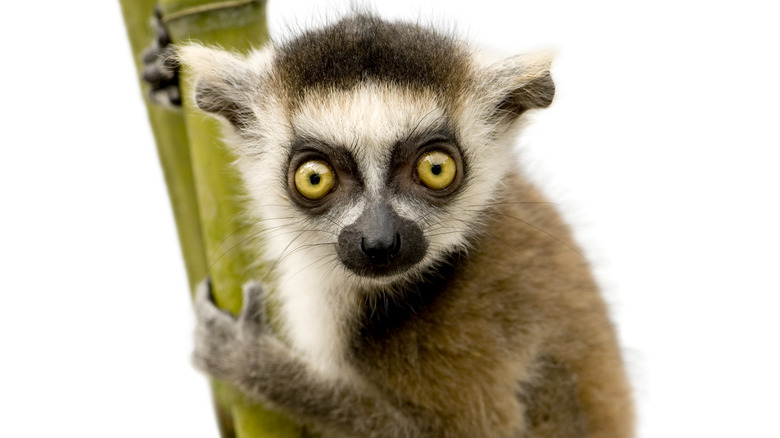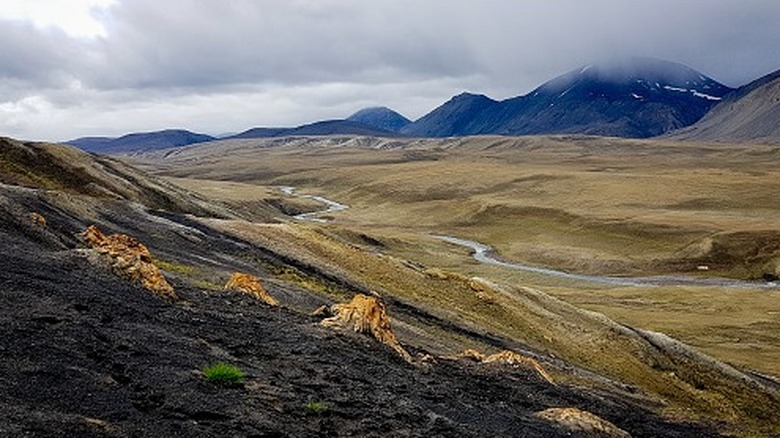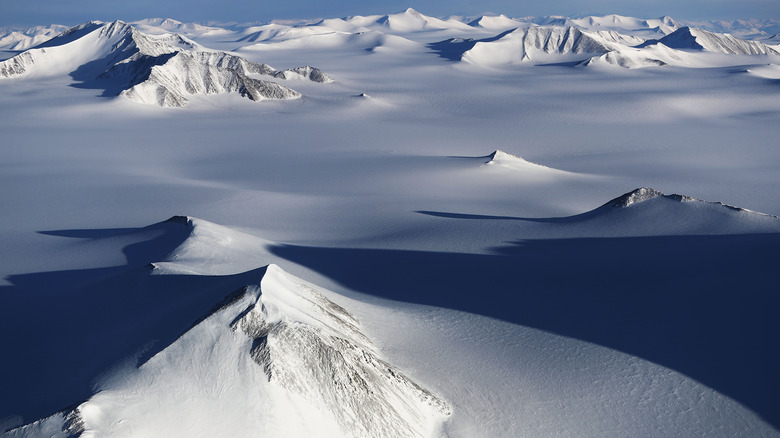The Ancient Primate Relative Discovered In Antarctica
Think primates have only ever lived in hot temperate climates like tropical rainforests (via Britannica)? There's evidence that primates, especially monkeys, at one time lived on every continent except Australia and Antarctica, as Live Science writes. According to a 2023 study from a team of researchers at Kansas State University, published on PLOS ONE, some 52 million years ago, two species of near primates lived as forth north as the Arctic Circle. Near primates are defined as close relatives of modern primates such as lemurs, as Nature explains
As CNN writes, the Arctic Circle back then was not the same cold, inhospitable place we know today. Though still colder than many other North American locations where relatives of these creature's fossils have been found, when these primate cousins called primatomorphans — the scientific term for a near primate — scurried around Northern Canada the Arctic Circle was a much warmer and far more inviting place. As a result, the two related near primate species called Ignacius mckennai and Ignacius dawsonae gradually underwent changes in their anatomy, which perhaps provides a blueprint for how modern species might adapt to warming Arctic temperatures today.
These near primates were half the size of a modern house cat
In a University of Kansas press release announcing the near primate Arctic Circle discovery, researchers explained the two near primate species Ignacius mckennai and Ignacius dawsonae descended from known species with fossils previously found in places like Montana and Colorado and as far south as Texas, according to CNN. They were about half the size of a house cat and reportedly looked something like a lemur-squirrel hybrid, as CNN writes.
Evidence of the Ignacius mckennai and Ignacius dawsonae were found in silt and date from the Eocene Epoch, some 66 to 23 million years ago (per Britannica). The Ignacius mckennai and dawsonae fossils were found on what is now Ellesmere Island in the Arctic Circle (pictured) which at that time was covered in forests. Fossilized remnants of those forests can be seen above. Though warmer than today, it was still dark there for half the year.
For this reason, when a few brave souls from near primate species living at points farther south in North America arrived in the Ellesmere Island area, over many thousands of year they developed several distinct characteristics to adapt to their new environment. Many of those changes likely occurred to help the mckennai and dawsonae near primate species find adequate food in the dim light of mid-winter.
They had stronger jaws and were slightly bigger
The primary changes between Arctic Circle Ignacius mckennai and Ignacius dawsonae were slightly larger and stronger jaws and bigger body size, per KU. It also had eyes on the side of its head and clawed fingers and toes, unlike other primates. Scientists involved in the study theorize the stronger jaw and other changes came about to help these lemur-like primate relatives consume harder seeds and nuts than their down-south relatives which ate softer fruit, according to CNN.
This evolution observed in the two Arctic Circle Ignacius species gives scientists some idea of how modern-day species might change as Arctic temperatures warm and some species move northward. Per PBS, temperatures in the Arctic region have warmed four times faster than other areas in the past four decades. In the Ignacious' day, it certainly froze but only for short periods of time. Warmer-weather crocodile fossils have also been found on Ellesmere Island (seen above).
Speaking with CNN, study co author Dr. Chris Beard said the research published on PLOS ONE, " ... [T]ells us to expect dramatic and dynamic changes to the Arctic ecosystem as it transforms in the face of continued warming ... Some animals that don't currently live in the Arctic will colonize that region, and some of them will adapt to their new environment in ways that parallel Ignacius. Likewise, we can expect some of the new colonists to diversify in the Arctic, just as Ignacius did."


